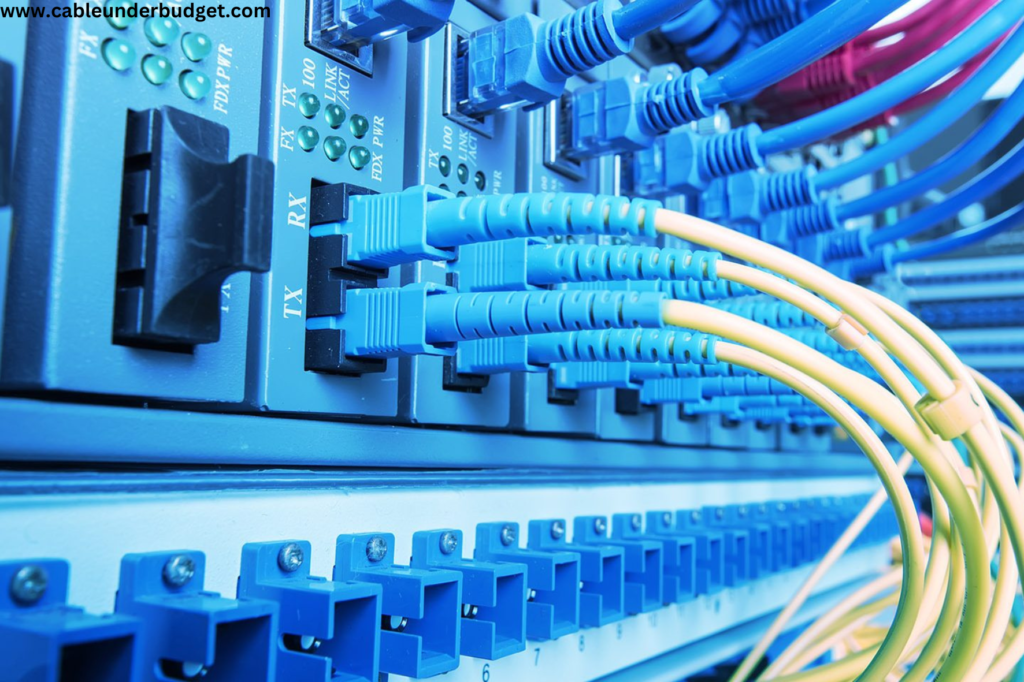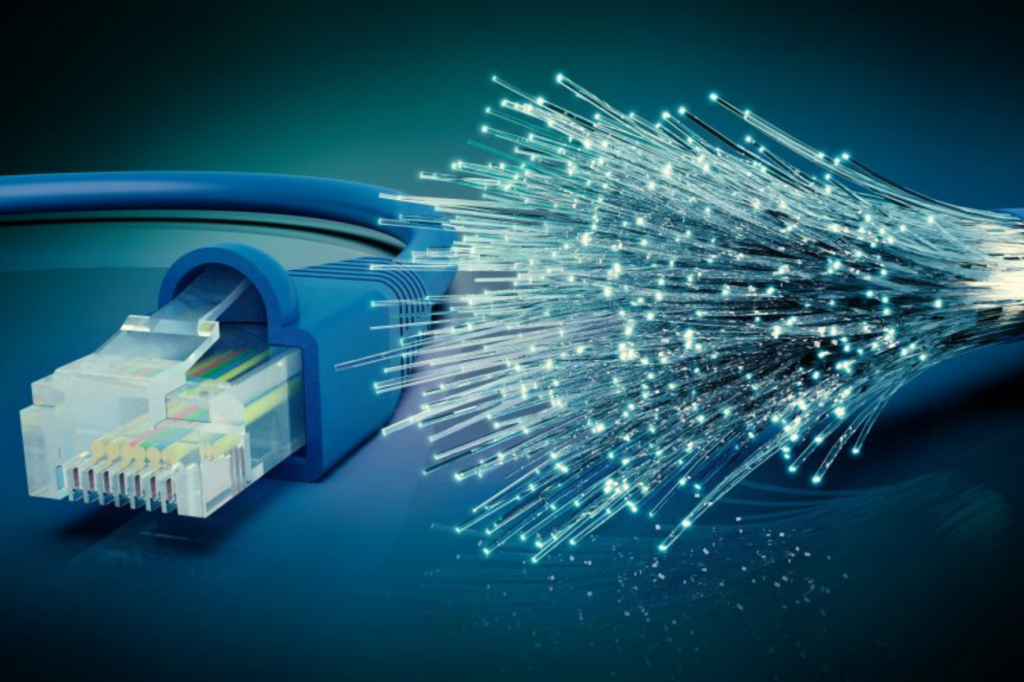Contents
- 1 Introduction
- 2 Understanding Pre-Terminated Fiber Optic Cables
- 3 Types of Pre-Terminated Fiber optic Cables
- 4 Advantages of choosing for Pre-Terminated Fiber
- 5 Factors to Consider while Choosing the Right Pre-Terminated Fiber Optic Cable
- 6 Installation Best Practices
- 7 Maintenance and Troubleshooting
- 8 Real-world Applications
- 9 Conclusion
Introduction
It is more important than ever to have smooth connectivity and lightning-fast data transfer in the rapidly changing world of information technology. This is where pre-terminated fiber optic cables emerge as the unsung heroes, revolutionizing the way we transmit data and communicate. We explore the complexities of pre-terminated fiber optic cables in this extensive guide, revealing their unmatched benefits and the reasons they are superior to the competition.
Understanding Pre-Terminated Fiber Optic Cables
What Distinguishes Pre-Terminated Fiber Optic Cables from other Cables?
Pre-terminated fiber optic cables come with factory-attached connectors, offering a plug-and-play solution for businesses. This eliminates the need for on-site termination, reducing installation time and ensuring optimal performance. The connectors are precisely terminated in controlled environments, guaranteeing consistent quality and minimizing signal loss..

Types of Pre-Terminated Fiber optic Cables
Single-mode Fiber Cables (SMF)
Single-mode fiber cables are designed to carry a single ray of light, allowing for higher bandwidth and longer transmission distances. These cables are ideal for applications requiring data to travel over extended distances, such as in long-distance telecommunication networks or connecting data centers in different geographical locations.
Key Features:
- Narrower core diameter (typically 9 microns)
- Lower signal attenuation
- Suitable for long-distance transmissions
Applications:
- Telecommunication networks
- Long-distance data center connections
- Campus backbone networks
Multimode Fiber Cables (MMF)
Multimode fiber cables are capable of transmitting multiple rays of light simultaneously. They are well-suited for shorter-distance transmissions within local area networks (LANs) or data centers. MMF cables are cost-effective and offer high data transfer rates, making them popular for high-density, short-distance applications.
Key Features:
- Larger core diameter (typically 50 or 62.5 microns)
- Higher signal attenuation compared to single-mode fibers
- Cost-effective solution for short-distance transmissions
Applications:
- Local area networks (LANs)
- Data center connections
- Video surveillance systems
MTP/MPO Fiber Cables
MTP/MPO (Multi-Fiber Push-On/Pull-off) connectors are utilized in pre-terminated fiber cables to facilitate the simultaneous connection of multiple fibers. These cables are commonly used in scenarios where high-density connections are required, such as in data centers or high-performance computing environments.
Key Features:
- High fiber count in a single connector
- Facilitates quick and easy connections
- Ideal for high-density applications
Applications:
- Data center interconnects
- High-performance computing environments
- Backbone cabling in enterprise networks
Armored Fiber Cables
Armored pre-terminated fiber cables are designed to withstand harsh environmental conditions, providing additional protection against physical damage and rodent attacks. These cables are crucial for installations in industrial settings or outdoor environments where traditional cables may be susceptible to damage.
Key Features:
- Additional layer of armor for physical protection
- Enhanced durability
- Suitable for outdoor and industrial applications
Applications:
- Outdoor installations
- Industrial environments
- Harsh conditions where cable protection is essential
Hybrid Fiber Cables
Hybrid pre-terminated fiber cables integrate different types of fibers within a single cable assembly. This allows for versatility in meeting varied connectivity requirements within a network.
Key Features:
- Combination of single-mode and multimode fibers in one cable
- Versatile for different application needs
- Streamlines cabling infrastructure
Applications:
- Mixed-distance data center connections
- Hybrid network architectures
- Comprehensive solutions for diverse connectivity requirement

Advantages of choosing for Pre-Terminated Fiber
Time Efficiency:
One of the primary advantages of pre-terminated fiber optic cables is the significant time savings during installation. Traditional cables require time-consuming termination processes on-site, whereas pre-terminated cables streamline the installation, allowing businesses to expedite jnetwork deployment.
Quality Assurance:
With pre-terminated fiber optic cables , quality is superior. Factory terminations undergo rigorous testing, ensuring that each cable meets industry standards. This dedication to quality results in a high-performance and dependable network infrastructure, which is essential for companies functioning in the digitally-driven environment of today.
Scalability and Flexibility:
The scaling of pre-terminated fiber optic cable is unmatched. By adding or removing cables, businesses can quickly extend their network infrastructure without affecting the current configuration. This adaptability is a valuable resource for businesses expanding or making infrastructure modifications to their IT systems.

Factors to Consider while Choosing the Right Pre-Terminated Fiber Optic Cable
Connector Types
Pre-terminated fiber optic cables come with various connector options, such as LC, SC, or MTP/MPO. Choosing the right connector type depends on the specific requirements of your network and the equipment you’re connecting.
Cable Types and Lengths
Selecting the appropriate cable type and length is crucial for optimal performance. Factors like transmission distance, environmental conditions, and compatibility with existing infrastructure should guide your decision-making process.
Fiber Type
Consider the fiber type that aligns with your network requirements. Single-mode and multimode fibers serve different purposes, and understanding their characteristics is essential for building a robust and efficient network.
Installation Best Practices
Plan and Design
Before installation, careful planning and design are essential. Evaluate your network requirements, determine cable routes, and ensure that the chosen pre-terminated fiber optic cables align with your infrastructure needs.
Professional Installation Services
Pre-terminated wires make installation simpler, but for best results, hire a professional installation company. Skilled specialists are capable of managing intricate installations, reducing the possibility of mistakes and ensuring a smooth integration.
Maintenance and Troubleshooting
Regular inspections:
Regular inspections are essential for seeing possible problems before they get worse. Make sure all of the parts, including the connectors and cables, are kept in perfect condition by doing routine inspections.
Invest in quality cleaning tools:
Signal integrity depends critically on clean connector maintenance. Invest in top-notch cleaning supplies to keep your pre-terminated fiber optic cables clean and long-lasting by removing dust and other impurities.
Real-world Applications
Pre-terminated fiber optic cables find extensive application across various industries due to their versatility and efficiency.
Telecommunications:
In telecommunications, these cables serve as the backbone for high-speed data transmission, providing smooth communication between different network components. In data centers, the quick and reliable installation of pre-terminated cables facilitates efficient connectivity, that support the ongoing demand for data storage and processing.
Healthcare:
Pre-terminated fiber optics are essential to the healthcare industry because they enable safe, fast communication between medical systems and devices. They guarantee quick and dependable data transfer, which improves patient care, data management, and medical research effectiveness.

Education:
In the realm of education, pre-terminated fiber optic cables support the growing demand for high-bandwidth applications in modern classrooms and online learning platforms. Their ability to handle large volumes of data with minimal signal loss enhances the overall educational experience, ensuring smooth communication and information transfer.
Industries:
Pre-terminated fiber optic cables are also used in industrial environments, where they enable reliable communication networks for automation, control systems, and surveillance. Their durability and resistance to electromagnetic interference make them a preferred choice in challenging environments where reliable connectivity is paramount.
Entertainment Sector:
Pre-terminated fiber optic cables are useful for the entertainment sector as well since they facilitate the smooth transfer of high-definition audio and video signals. These connections help television studios, music halls, and theaters create immersive multimedia experiences.
Conclusion
To sum up, the benefits of pre-terminated fiber optic cables are evident and strong. These cables are the best available for connectivity, offering future-proofing capabilities, unmatched performance, and easy installation. Use pre-terminated fiber optic cables’ efficacy, dependability, and affordability to revolutionize your network infrastructure.


great work
Pingback: What are RJ11 Connectors? |There Usage in Telecommunication